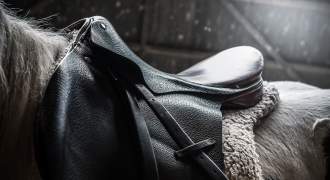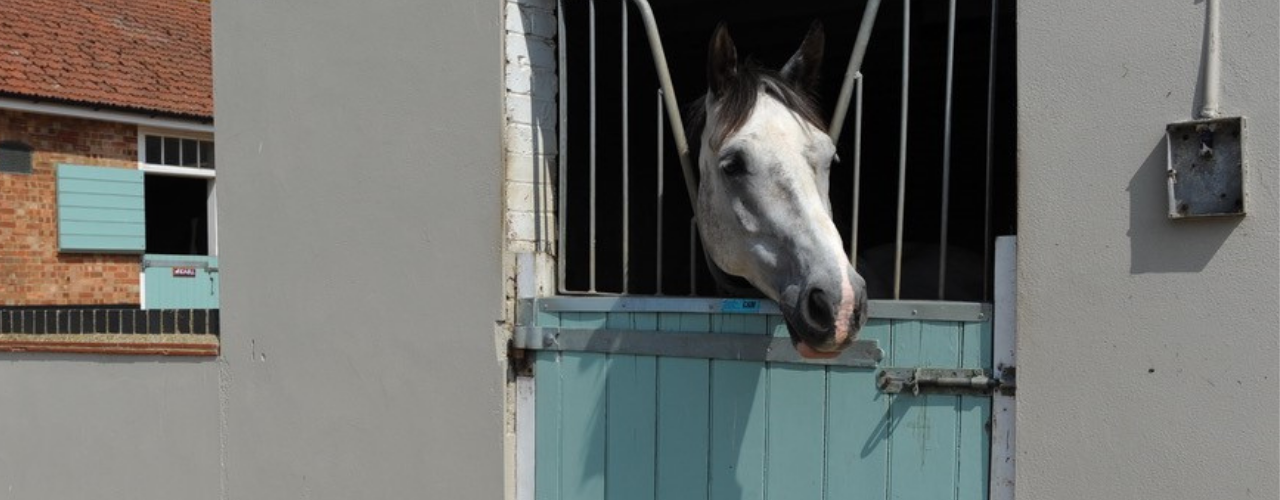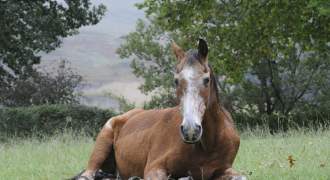
5 Top Tips for Looking After your Horse Tack
Horse tack is expensive, but caring for it properly means it will last you much longer, even if you’re spending long days in...
14 March 2017
Read More
Box Clever – coping with box rest
The words every horse owner dreads – BOX REST!
If you and your horse find yourselves in this situation don’t panic because with careful planning and management most horses will adapt well to a few weeks of confinement.
Some of the most common reasons for box rest are musculoskeletal problems, laminitis or post-surgical recovery. The most important things to ensure a successful outcome are good communication between the owner, vet, farrier and yard manager and a good routine: Horses thrive on routine so spend some time working out a suitable pattern of care for your horse that you will be able to stick to.
Stable Environment
Where you stable your horse within the yard can have a big impact on how well he copes with box rest. Knowing your individual horse is key; some may love being in a busy part of the yard with lots going on keep them interested, whereas others may settle much better in a quieter area. In both cases remember that horses are herd animals though and appreciate being able to see other horses. Some may even accept the company of a goat, or a sheep!
Another point to consider is that whilst a lovely view of the fields may seem a nice option for us, some horses may become frustrated if they can see their friends running around the field while they are confined.
Bedding
The type of bedding you use may depend on the reason for the box rest and it’s best to follow your vet’s advice. In most cases, a bedding that will limit dust is preferable as it will help prevent respiratory problems. A laminitic is likely to require a thick shavings bed.
Feeding
The horse on box rest will usually need a high fibre and low starch diet but some conditions such as laminitis or post colic surgery will require a very specific feeding regime. Speak to your vet or an equine nutritionist for advice.
As a rule, feeding a good quality meadow hay or high fibre haylage, together with a balancer or the recommended ration of a high fibre feed to provide daily vitamins and minerals is a sensible option.
Colic may be a risk for some horses on box rest. Soaking hay and feeding wet feeds can help to reduce the likelihood of impaction. Feeding something succulent can also help. Carrots and apples, sliced lengthways, are usually well received as is freshly picked grass (unless laminitis is a problem).
Feeding forage little and often is key. Some horses appreciate several different feeding stations around the stable to add interest. If you are struggling to get him to eat his medication, adding grated carrot, garlic or even blackcurrant juice can all help to disguise the flavour!
Boredom Busting
Looking at the same walls 24/7 can be boring – especially if your horse has been used to an active life but spending of time with your horse every day can make a big difference to his mental wellbeing.
Grooming is good for his circulation and is also a good time for you to monitor his health and condition. If your horse is quite settled your vet may agree that you can move him to a safe area outside for grooming, to add some variety to his day.
If he has a special friend that he gets on well with (perhaps his usual field companion) perhaps they can spend some time together mutually grooming each other if it is safe to do so. He will probably appreciate the odd back scratch from you too!
The joys of toys
A treat ball is often well received and may be a useful distraction if there is a particularly stressful time of day such as when his best friend is being ridden or turned out. It is better to allow access to toys for short period so that your horse remains interested in them.
Many horses enjoy listening to a radio but prefer calm music. Some find a stable mirror provides some interest and comfort.
Always check your horse’s reaction to any stable enrichment products before leaving him alone with them as occasionally they may cause frustration.
Hand Walking and re-introducing exercise
The extent of box rest will vary between cases. Some will require total box rest while others may be allowed some hand grazing or walking from the start, but at some point ridden horses will need to be reintroduced to exercise.
In some instances, your horse may be allowed access to a small turnout pen. The success of this can depend on the time of year as a warm, sunny day with a good bite of grass is far more conducive to good behaviour than a cold January morning! In other cases, you will have to ‘calmly’ walk your horse for a set period every day which can be a challenge!
Remember to ALWAYS wear a properly secured hard hat, gloves and suitable boots for in-hand exercise and preferably a bridle for your horse. If the horse is known to be especially tricky chat to your vet about some mild sedation for the initial stages. Decide on the best time of day for minimal distractions and then try to stick to it - that way it will form a part of your horse’s daily routine and he is more likely to be calm.
The exact rehabilitation programme will largely depend on the type of injury and the original reason for box rest, but your vet will guide you. In some cases, it is preferable to begin ridden work before turnout, in others reintroduction to time in the paddock may be advised. Remember the more time allowed to rehabilitate your horse and get his fitness back then the more successful the long-term outcome is likely to be.
MM-17015

Horse tack is expensive, but caring for it properly means it will last you much longer, even if you’re spending long days in...
14 March 2017
Read More
The longest living horse on record is thought to be Old Billy, a barge horse from Manchester who died in 1822 at the astonishing a...
07 February 2017
Read More